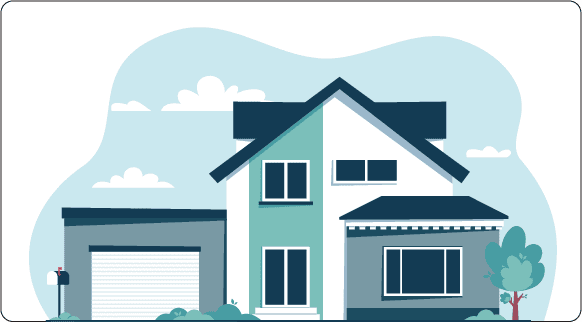Are Historic Districts Worth Living In?

A historic district is an area within a city that can be considered due to its cultural and historical importance. It often illustrates the history of the city.
The spatial and economic structures of cities, as well as their monuments, are deeply embedded with history. Historic districts are symbols of the city’s image. They shape the identity and image of the city. Despite having undergone numerous transformations, it is commonly used as a symbol of the city’s image.
As per Wikipedia, “A historic district or heritage district is a section of a city which contains older buildings considered valuable for historical or architectural reasons.”
Historic District in Indian Context
In the Indian context, the following conceptualization by Menon comes closest to UNESCO’s understanding of historic districts: “Many historic cities do not contain individual buildings of exemplary merit, but as a precinct, they represent a way of life and living which is an intangible characteristic of urban heritage”
Public administration has a dual challenge; on the one hand, the modern urban development has to be preserved, and on the other, support must be given to the vitality of the city’s cultural heritage. The historic district is a treasure for our city. It is our responsibility to preserve that cultural wealth while improving the overall quality of the city.
Because of the unique qualities of these locations, considering the advantages and disadvantages of living in the historic area is a necessary step.
Let’s discuss the advantages and disadvantages of living in a historic district.
Why Should You Live in a Historic District?
1. Offers Charm and Character
Historic districts are unique in their charm and beauty. The best of the particular architecture can be found in a historic home. In general, historic homes are more attractive than contemporary houses. If you really like the bay window, balustrades, shutters, and so on, you should think about living in the historic district.
Living in a historic district allows you to spend every day in one that you find aesthetically pleasing.
2. Stunning Architectural Style
Historic districts are often constructed in stunning architectural styles. The distinctiveness of the area and the language and personality of the place is difficult to get in the modern urban areas.
3. Financial Benefits From Government
Some state and local governments offer tax deductions and financial incentives to the owner of the historic districts. Loans may be available for renovations of a historic home. Often these loans come with lower interest rates.
4. Sense of Community
Most historic dwellings are part of recognized historic districts and play a significant role in their communities. On both the societal and district levels, historic districts frequently have a strong and active community. There might be a lot of community involvement from local leaders or enthusiasts.
There would be little new construction around you, which will help to reduce traffic noise.
5. Financial Value
Historic homes can be hugely beneficial to their owners if they are well-maintained. On the market, historic homes frequently appreciate in value. The key to real estate price appreciation is high desirability and limited supply.
Even in a downturn, historic home is unlikely to be affected and retain its value. The primary reason you consider living in the historic district is the high possibility of good financial returns when ready to sell.
Why Should You Not Live in a Historic District?
1. Requires Lots of Work and Maintenance
If you intend to live in the historic district, you should prepare a list of charges that will arise. Given that the majority of the houses are at least 50 years old, they will require considerable work. Some of the major issues that may arise include water damage, electrical issues, structural issues, and so on. If you choose to live in a historic district, make sure you have the finances to repair it.
2. Strict Rules
The owner must follow the strict rules imposed by the local authorities. Without prior permission from the local or concerned authority, the owner may be unable to modify. It is recommended that you contact the local authorities before moving to the historic district to learn about the specific rules of a designated historic district in your town.
3. Expensive Insurance
Historic homes are typically more than 50 years old. Insurance companies view older homes as riskier than newer ones. They can be fragile, and the materials used to construct them may be obsolete; as a result, insurance premiums for older homes are generally higher.
Final Thought
Before making the decision of moving to a historic district, consider the pros and cons. It is also crucial to consider prospective renovation and maintenance costs and balance them with your budget. If the benefits outweigh the drawbacks, you’re one step closer to purchasing a historic home.
The goal is to design a beautiful home that reflects not only the historical significance of the property but also your own needs and desires. Reaching out to a credible real estate agent is an excellent way to receive expert advice on the matter.
All you have to do is contact Roodland, which provides the best real estate services. Roodland understands your requirements and expectations and works with you to satisfy them. Roodland assures me to be with you in every dream you have and to guide you with the best.
If you found this article about living in the historic district useful, please consider sharing it with your friends and family, who may be interested in!

Exploring the Diversity of Residential Buildings in India: From Bungalows to Eco-Friendly Homes
living in historic homes certainly has its own charm. It comes with several advantages and disadvantages that you might not...
Why Do Buyers Prefer Homes above 1 Crore?
living in historic homes certainly has its own charm. It comes with several advantages and disadvantages that you might not...
Residential Real Estate in GIFT City
living in historic homes certainly has its own charm. It comes with several advantages and disadvantages that you might not...
Reasons for the Illegal Construction and What the Government Official Can Do to Avoid Them?
living in historic homes certainly has its own charm. It comes with several advantages and disadvantages that you might not...
What is Token in Real Estate?
living in historic homes certainly has its own charm. It comes with several advantages and disadvantages that you might not...
The Power of Anchor Tenants: How Top Brands Can Boost Your Commercial Real Estate Development
living in historic homes certainly has its own charm. It comes with several advantages and disadvantages that you might not...
Understanding Balloon Payments in Financing Option
living in historic homes certainly has its own charm. It comes with several advantages and disadvantages that you might not...

















